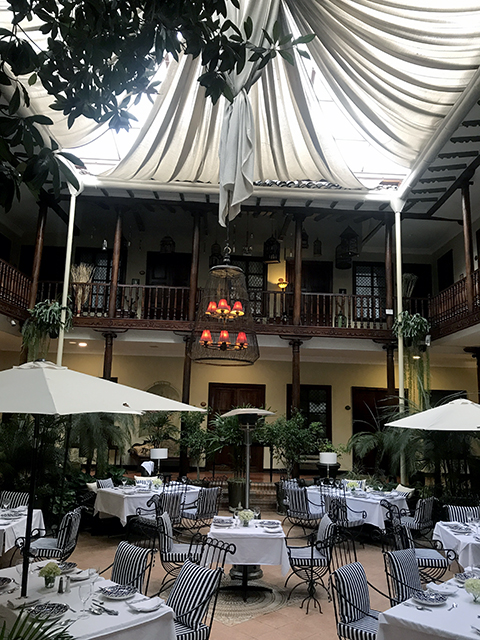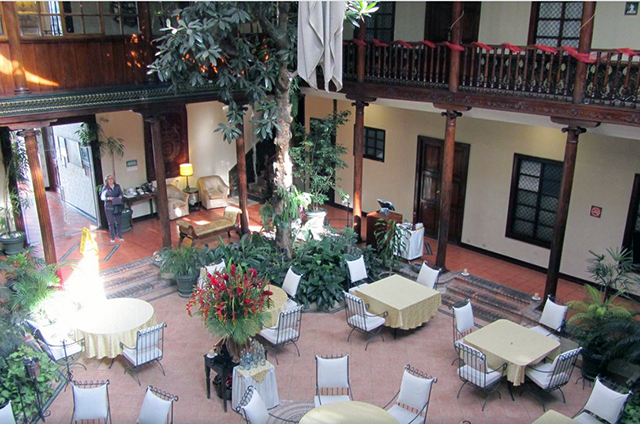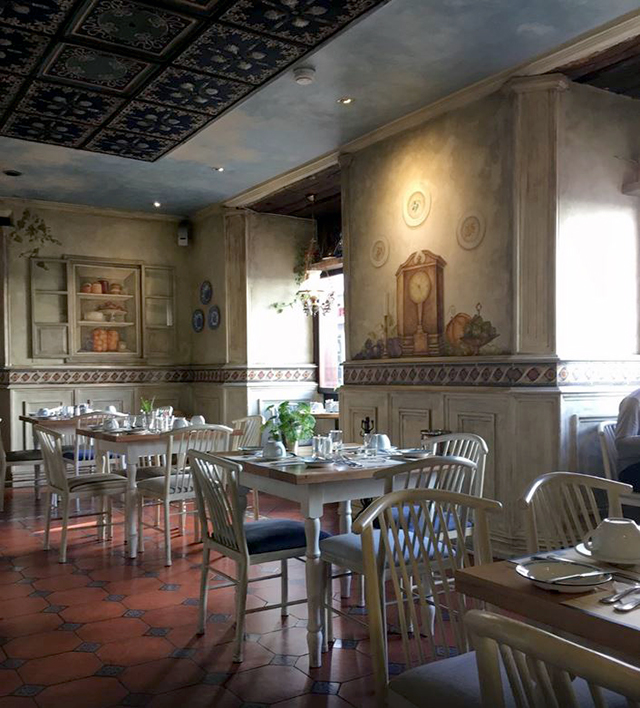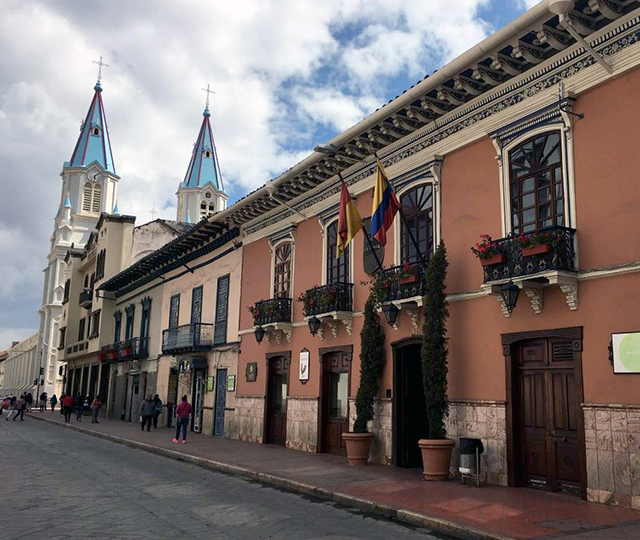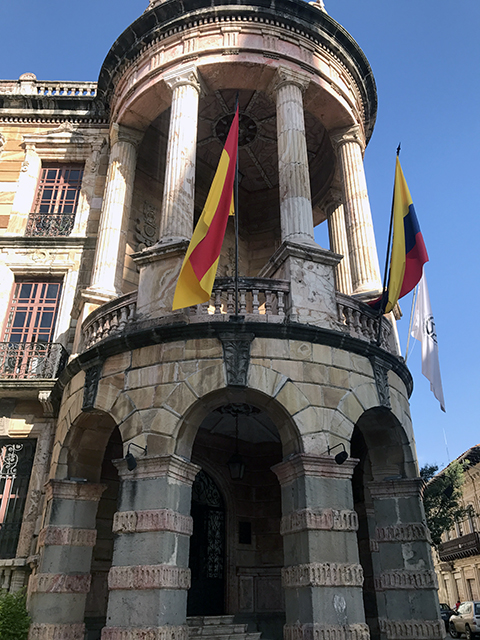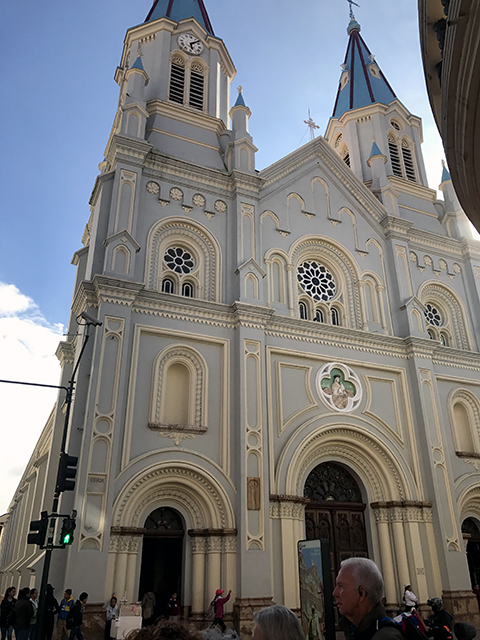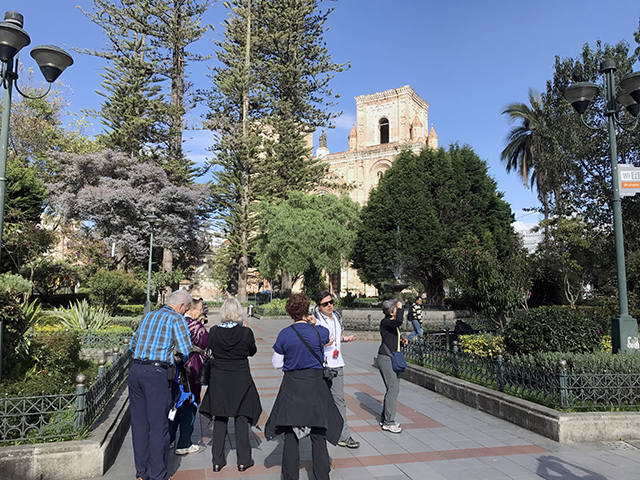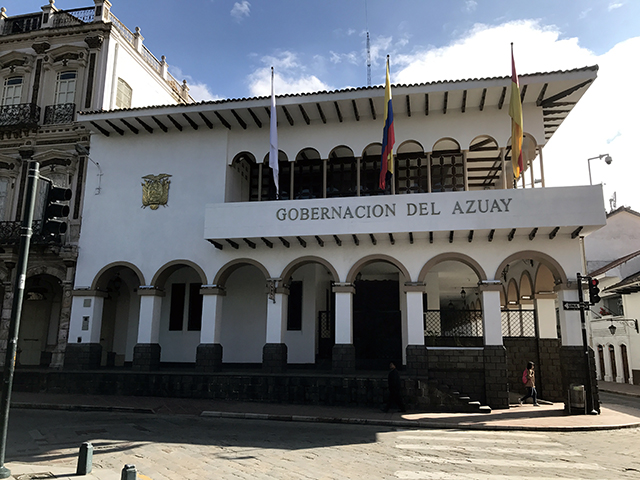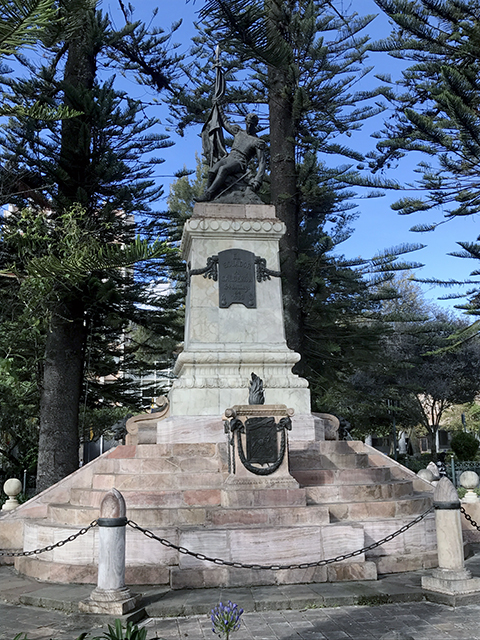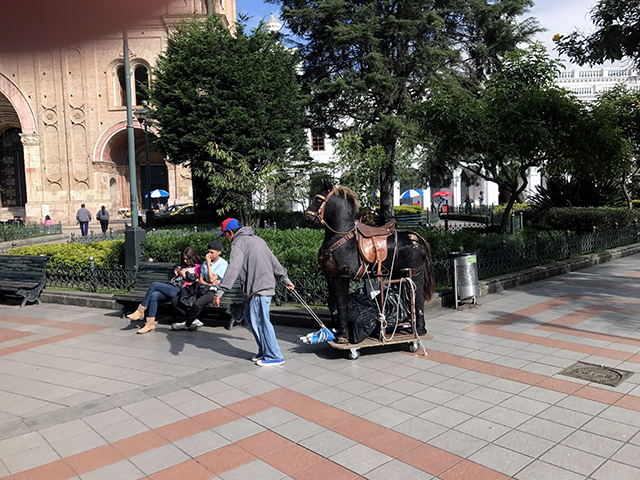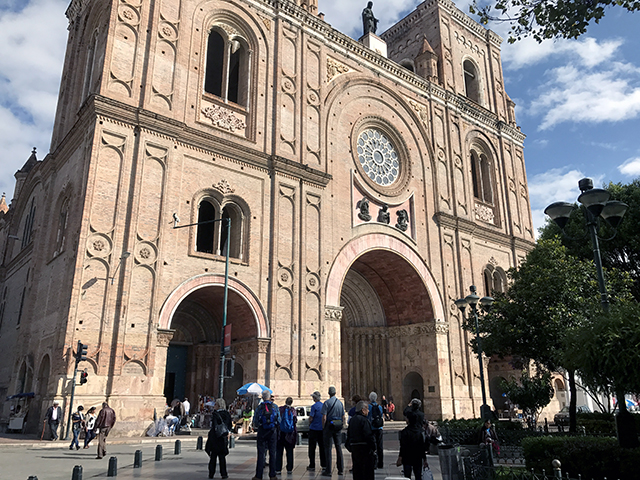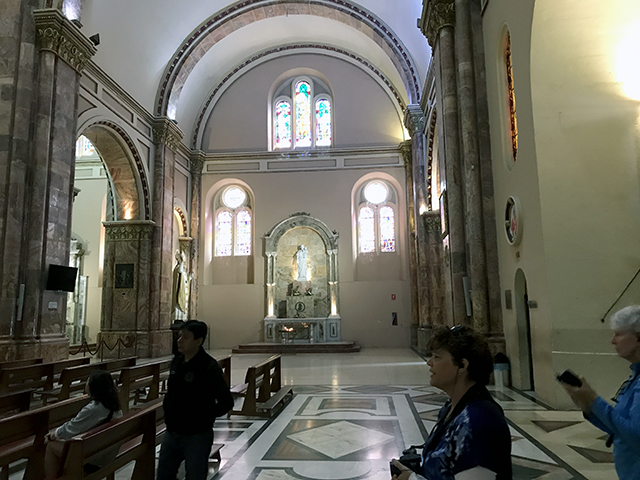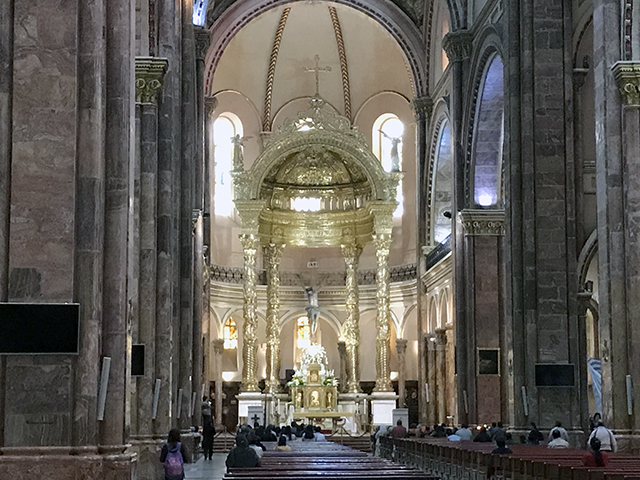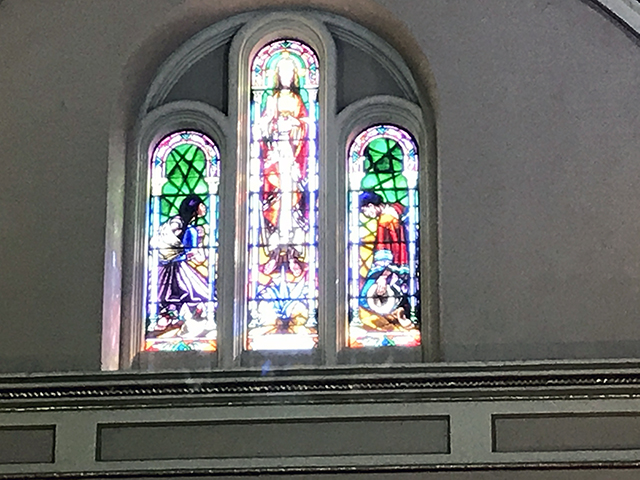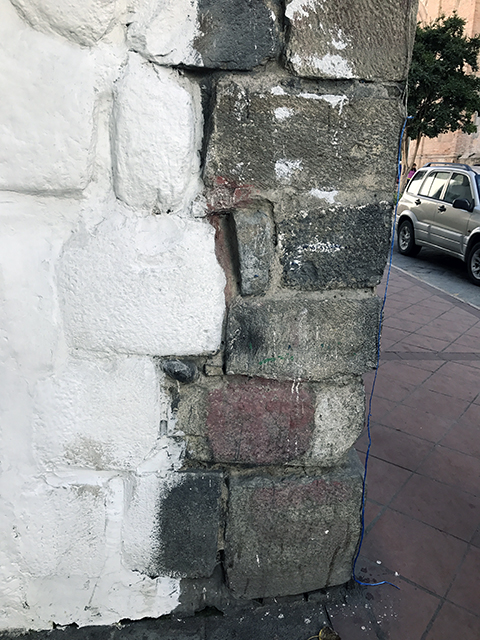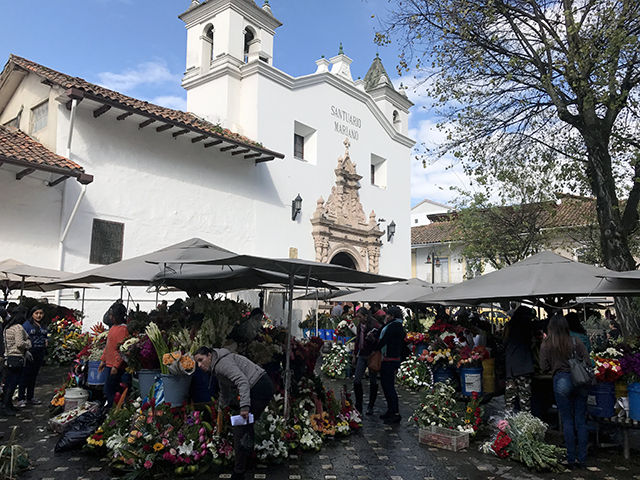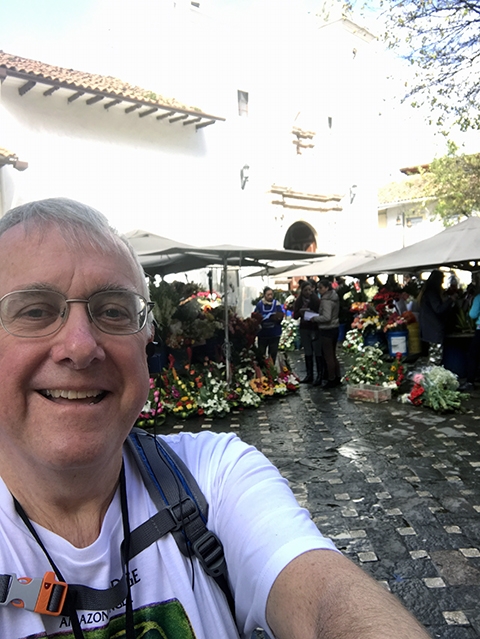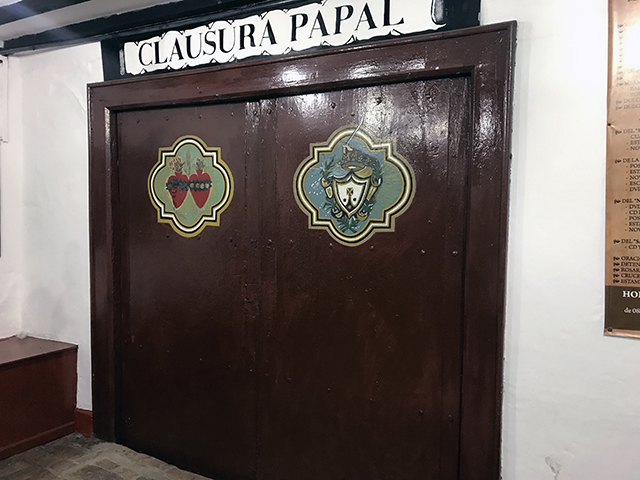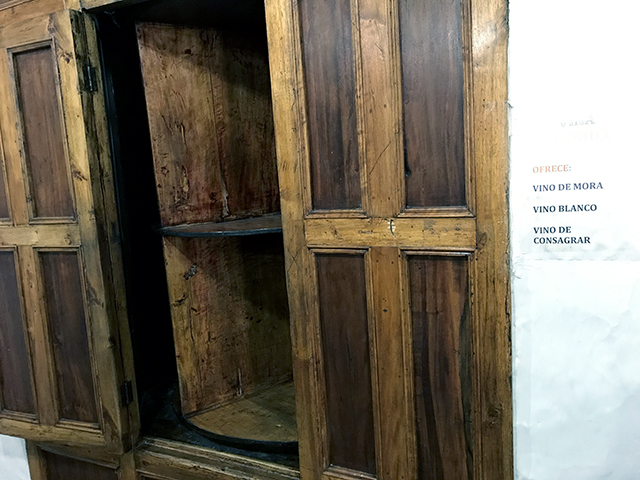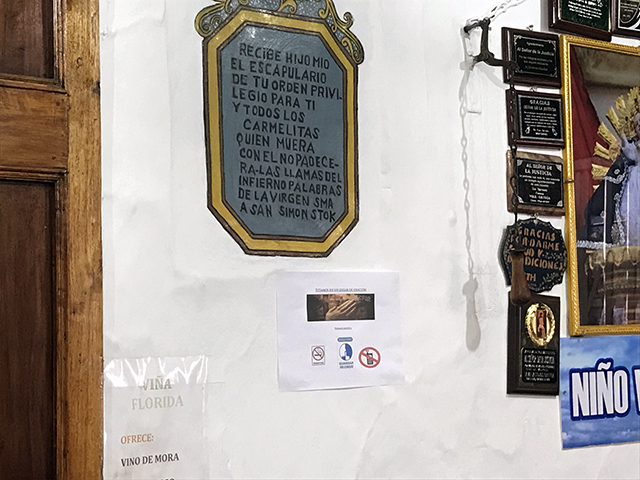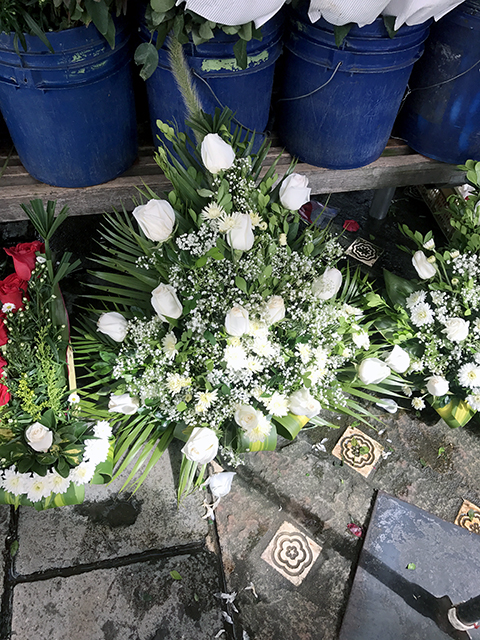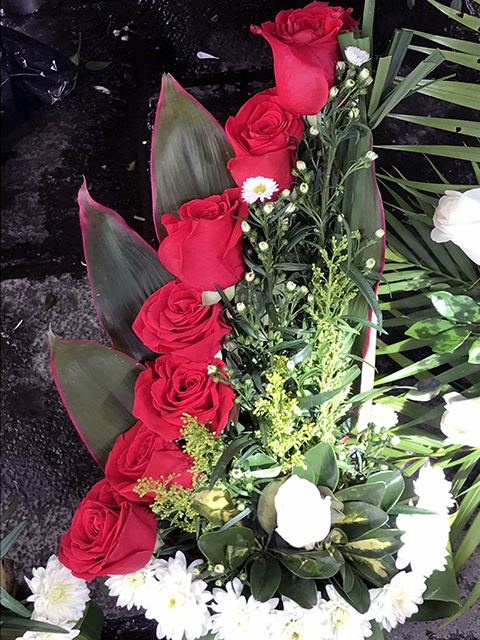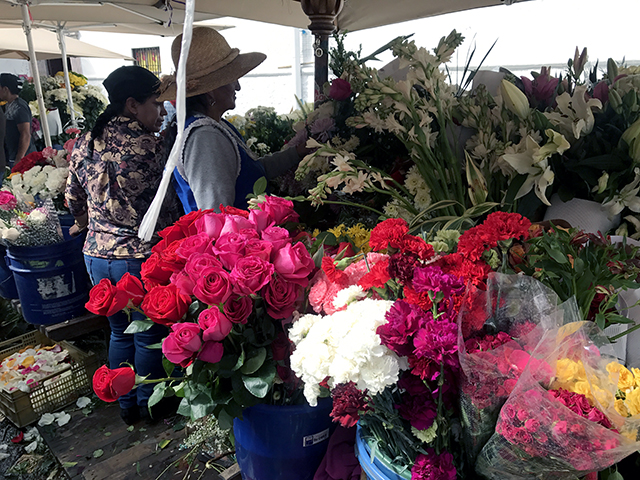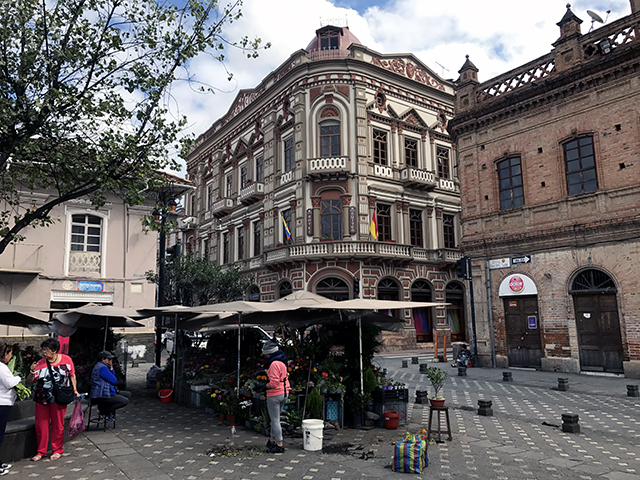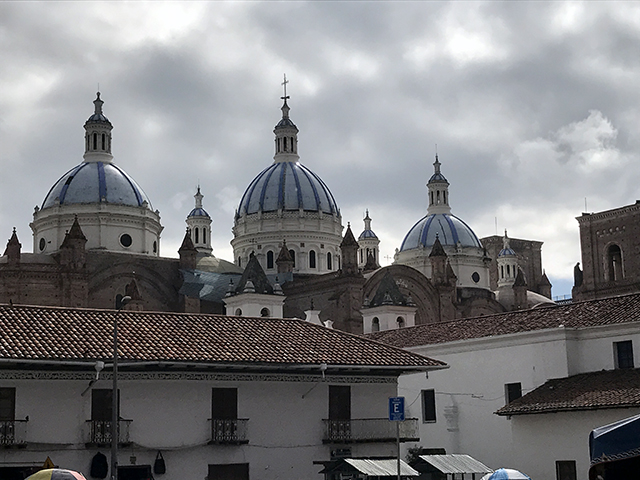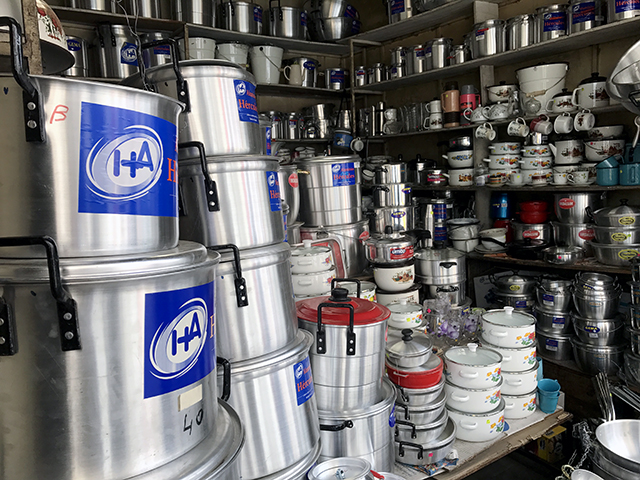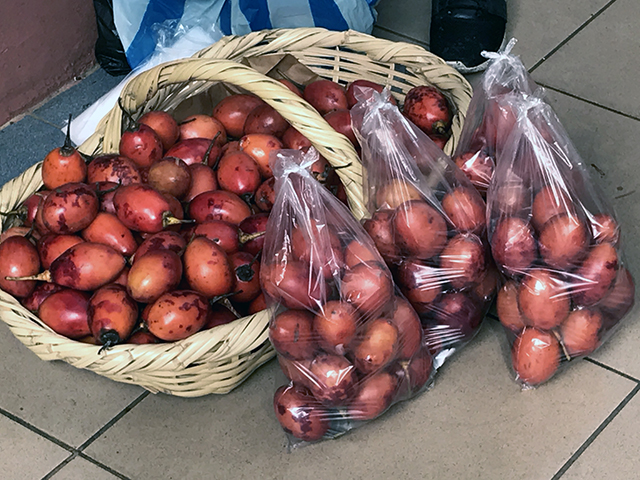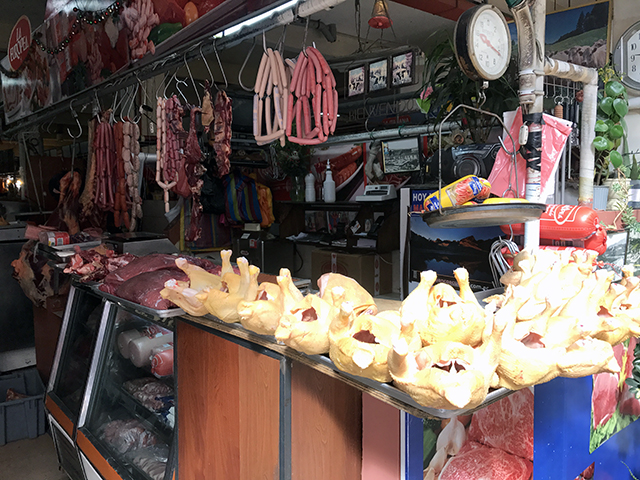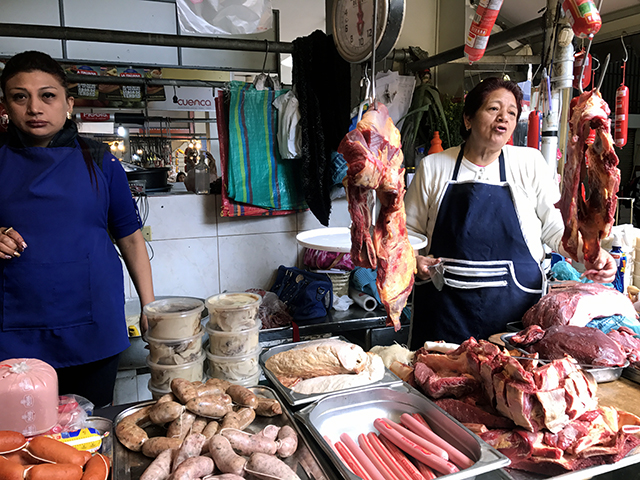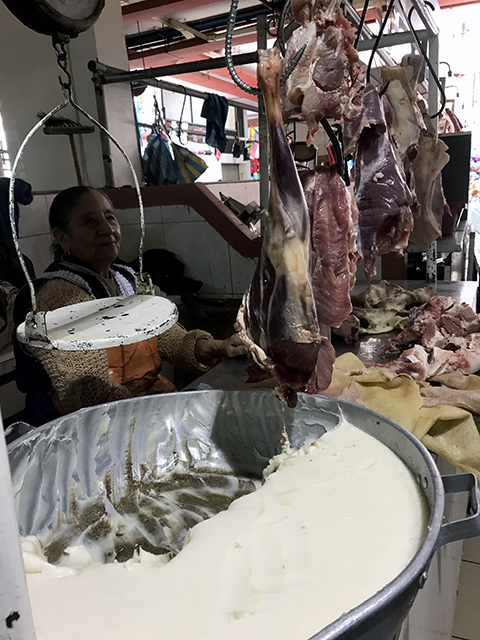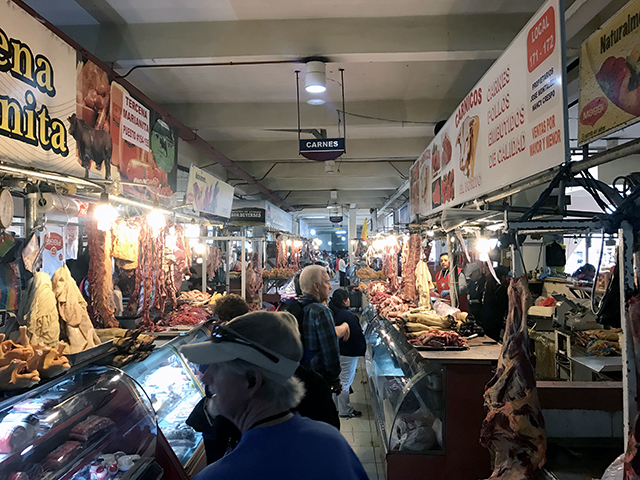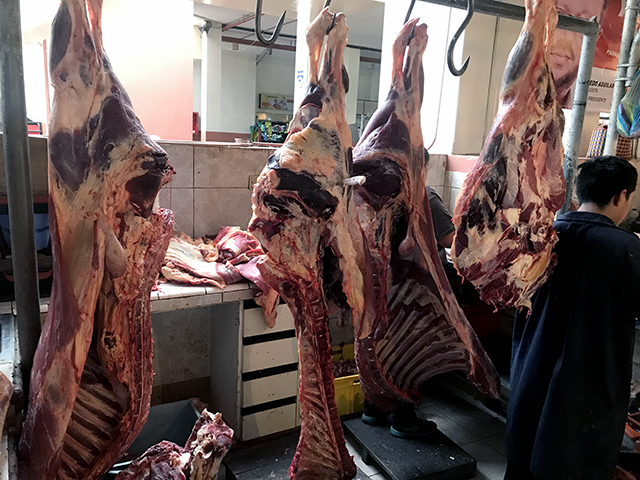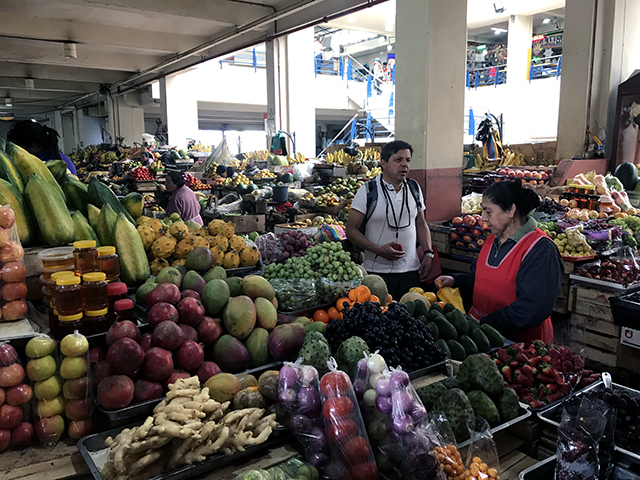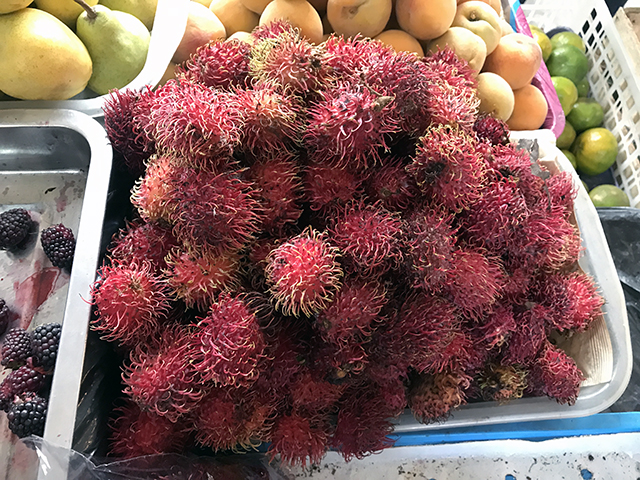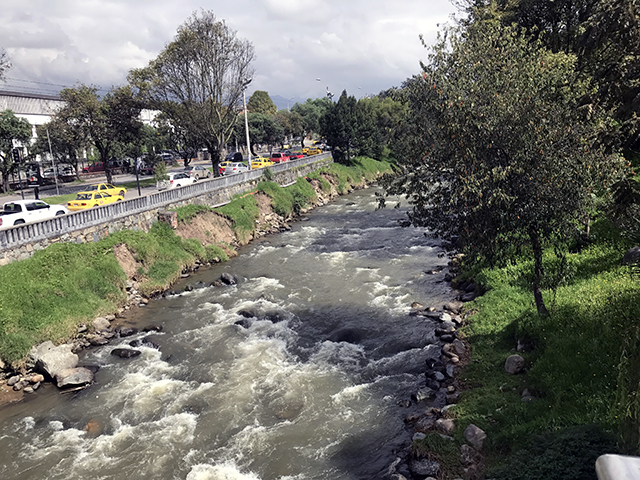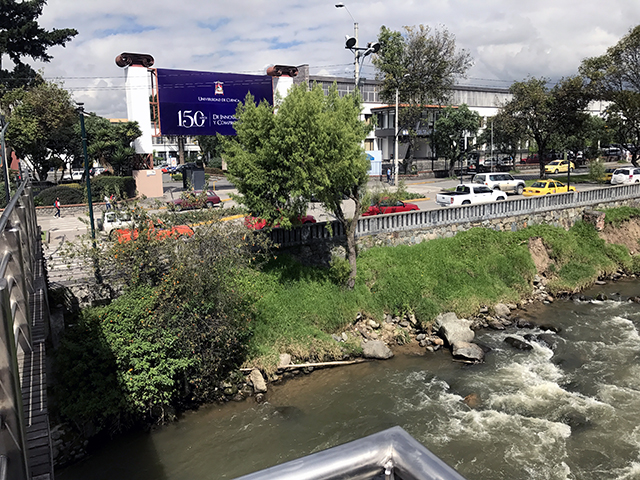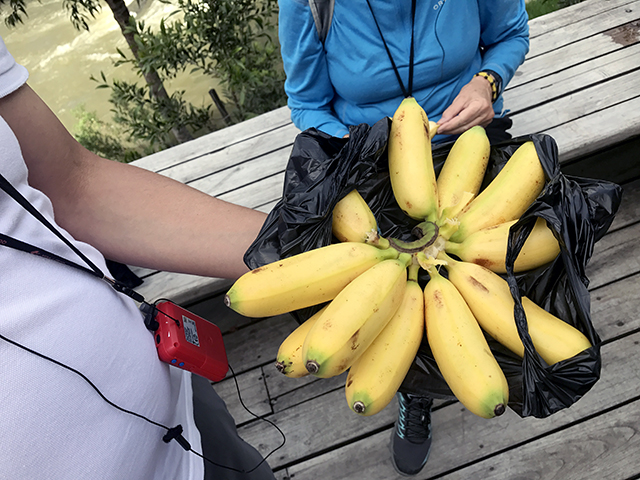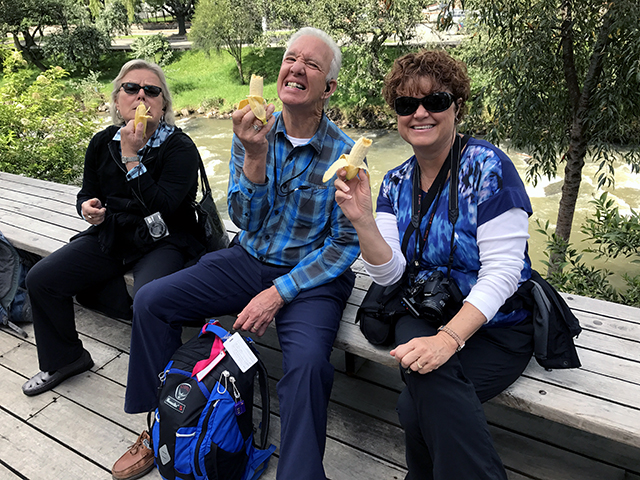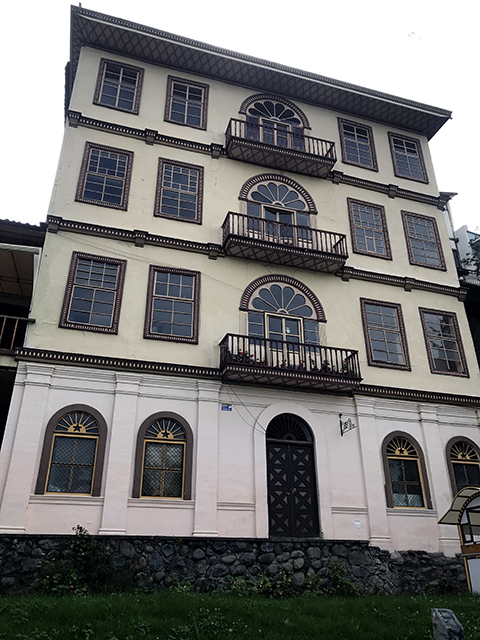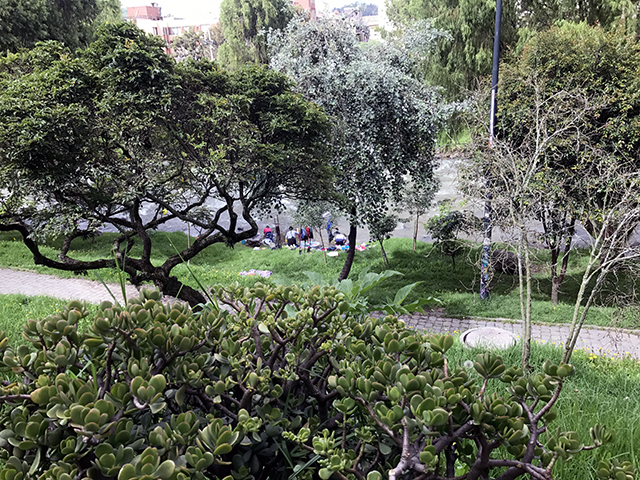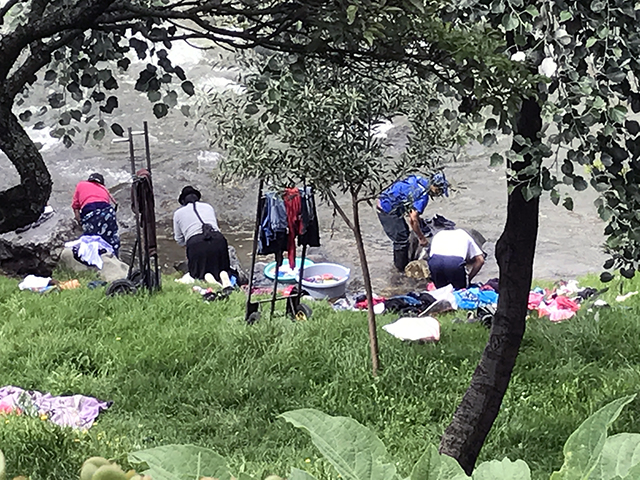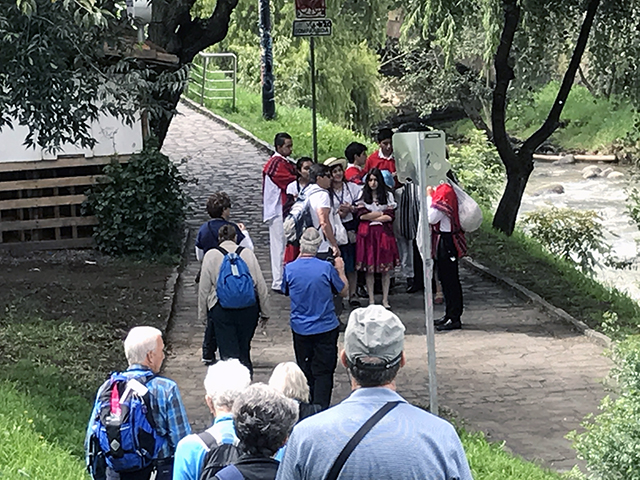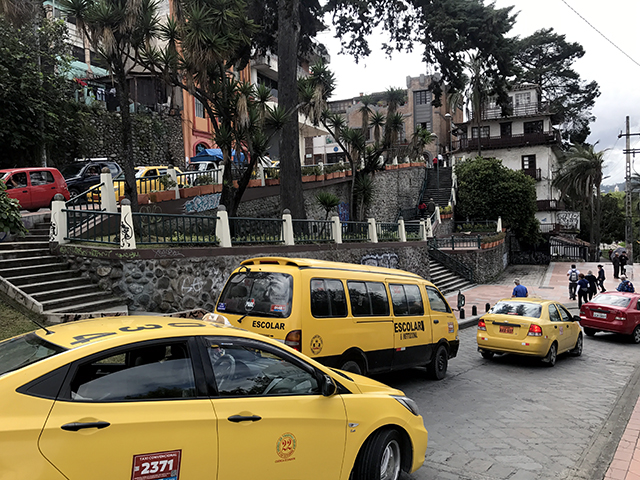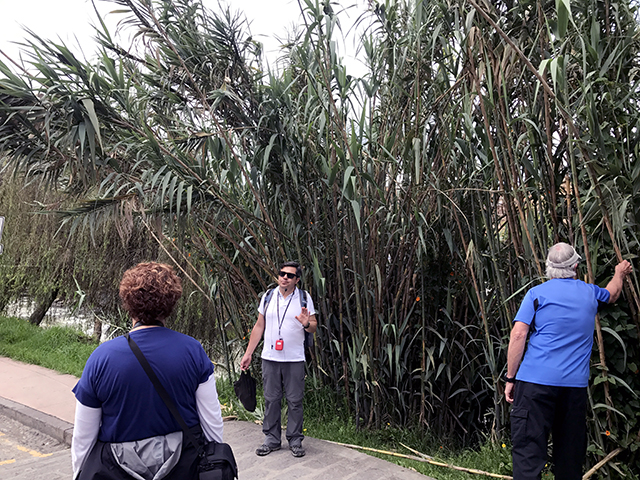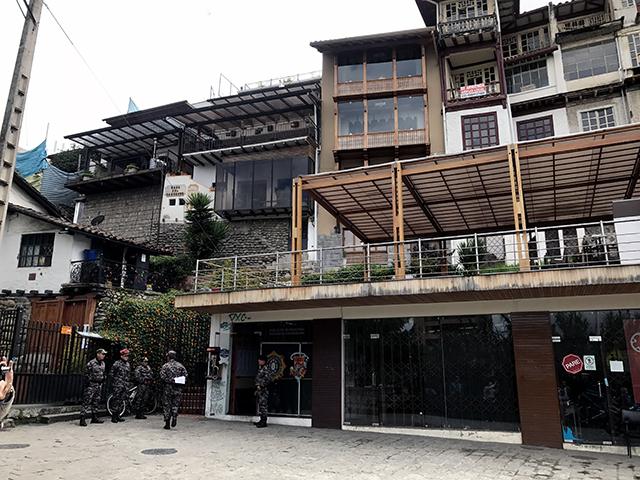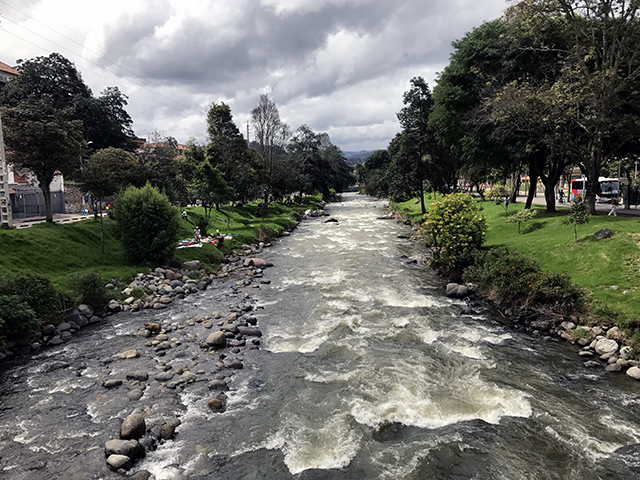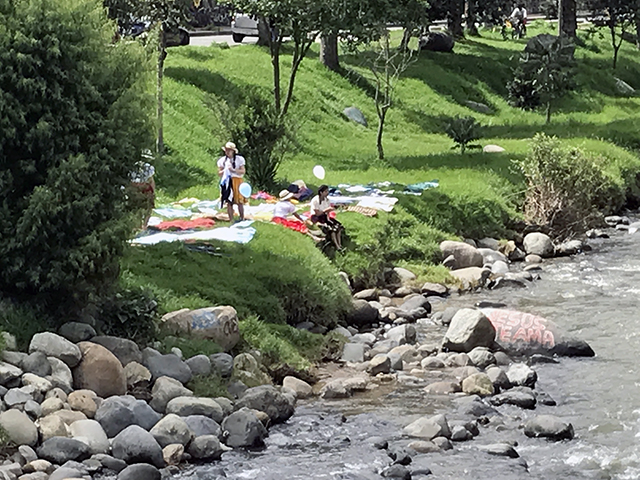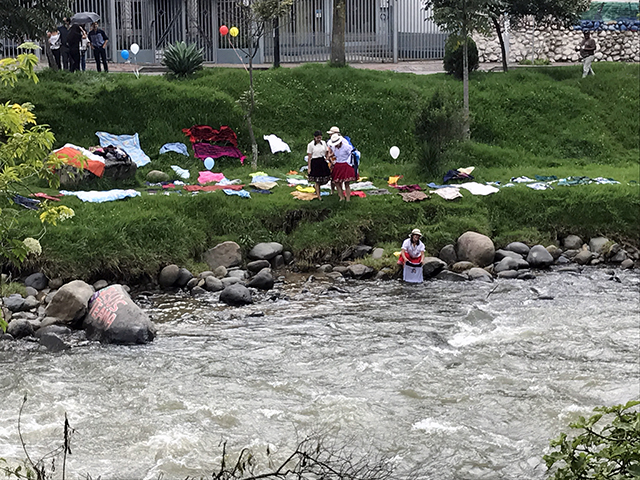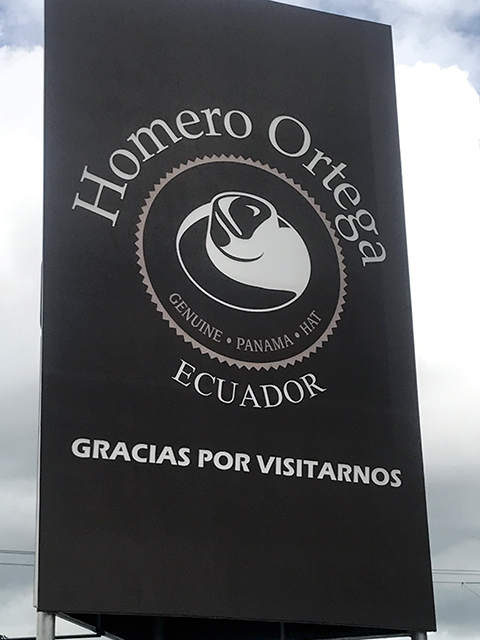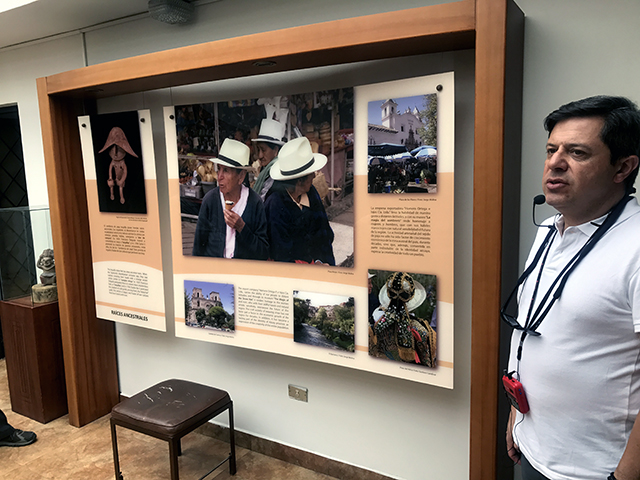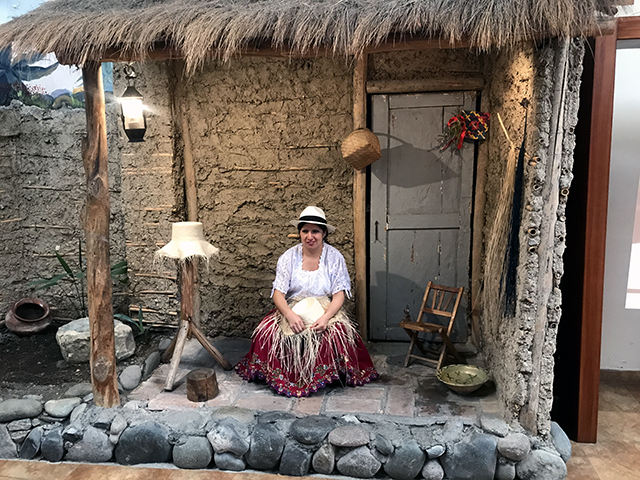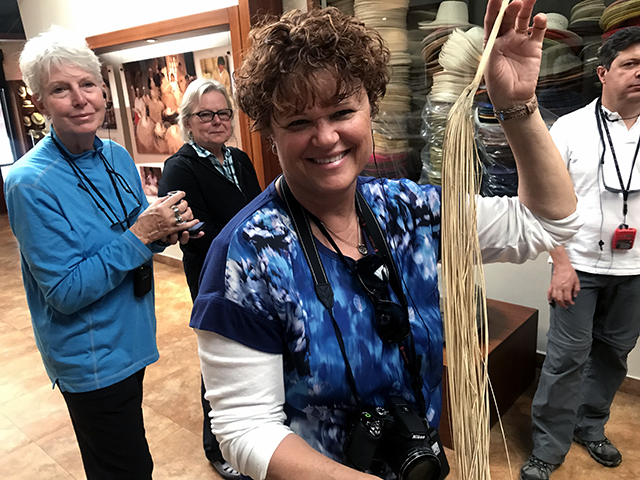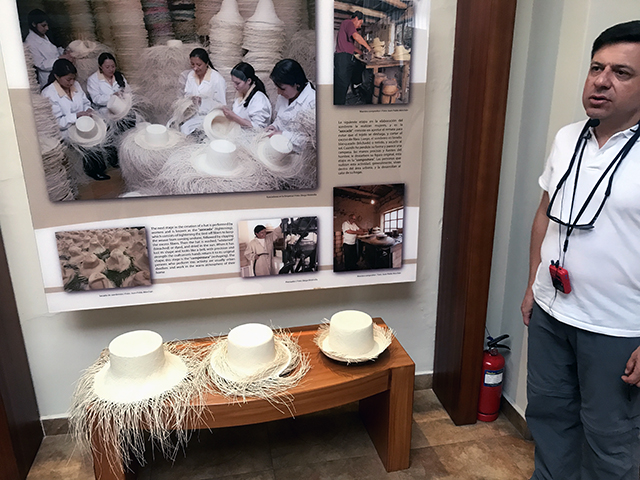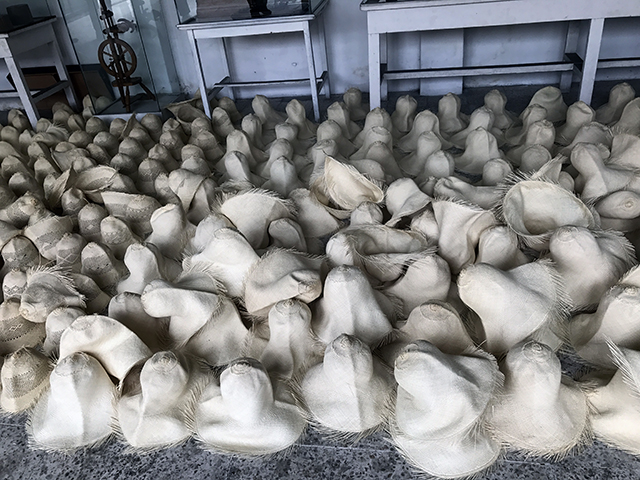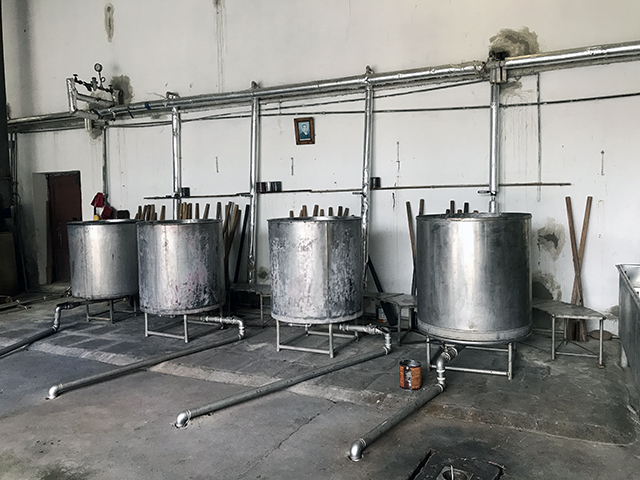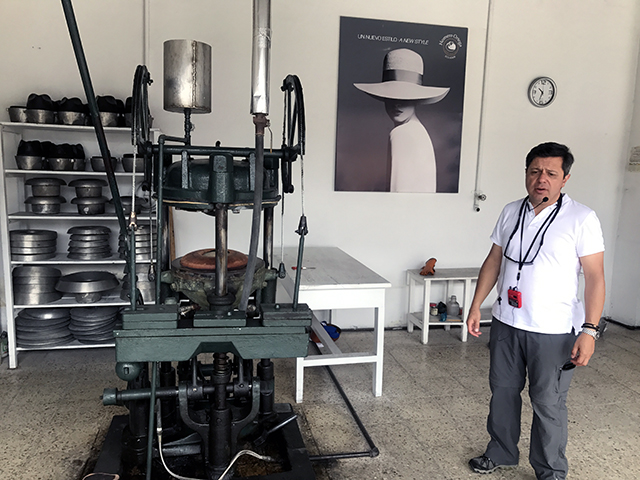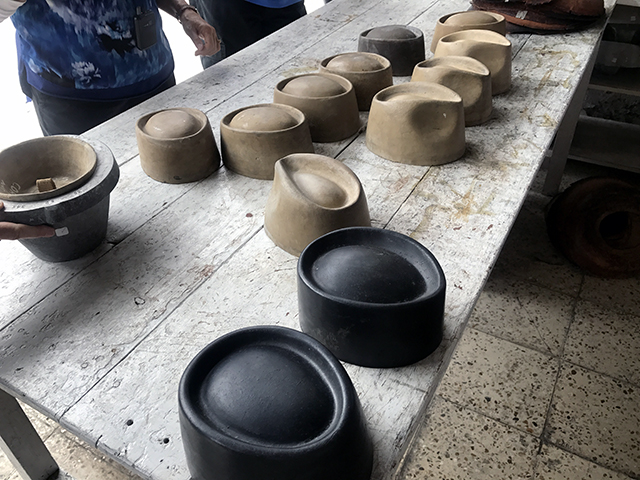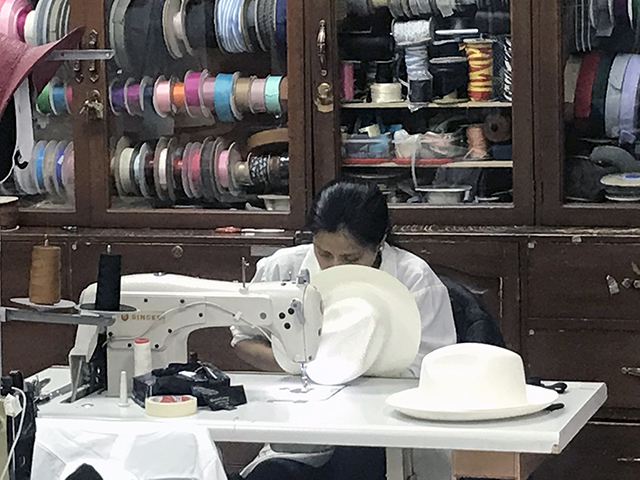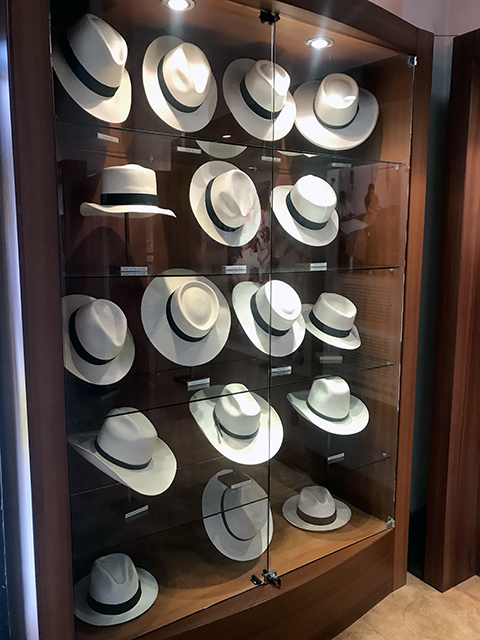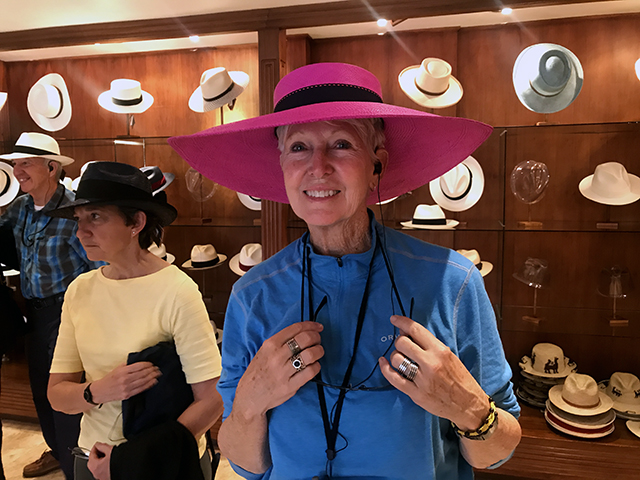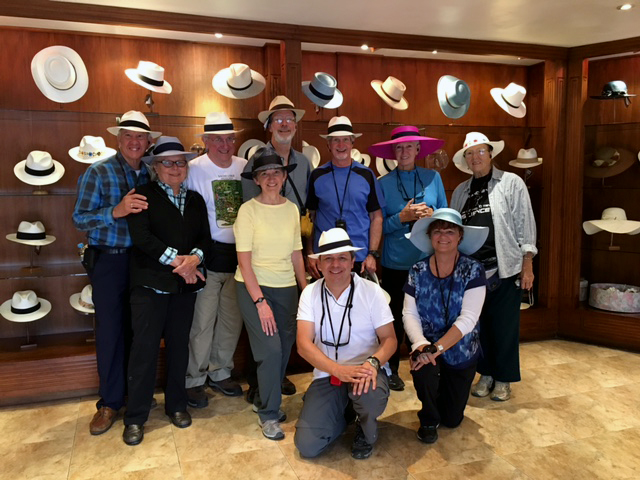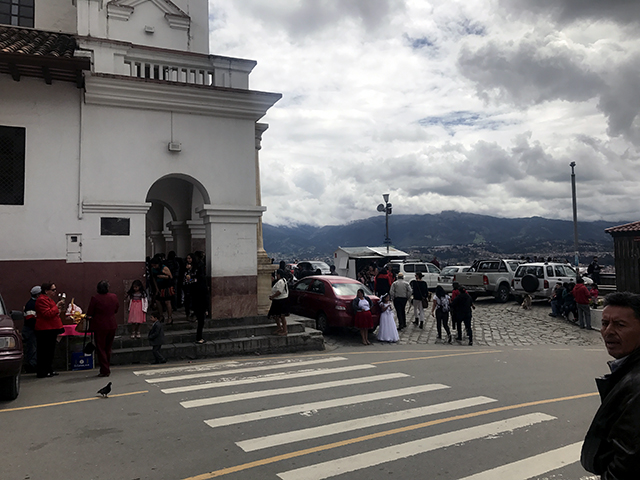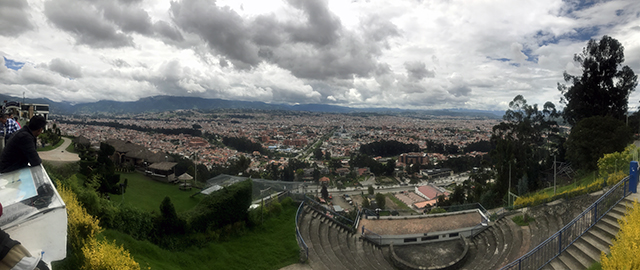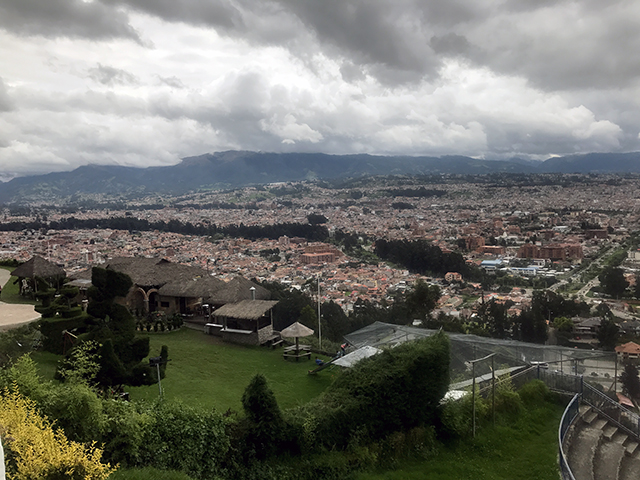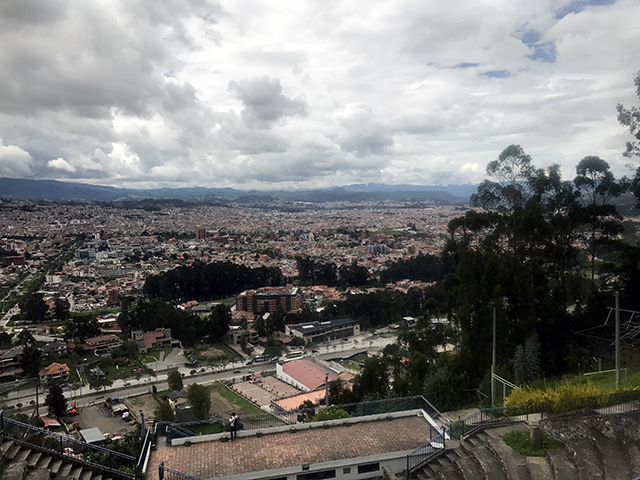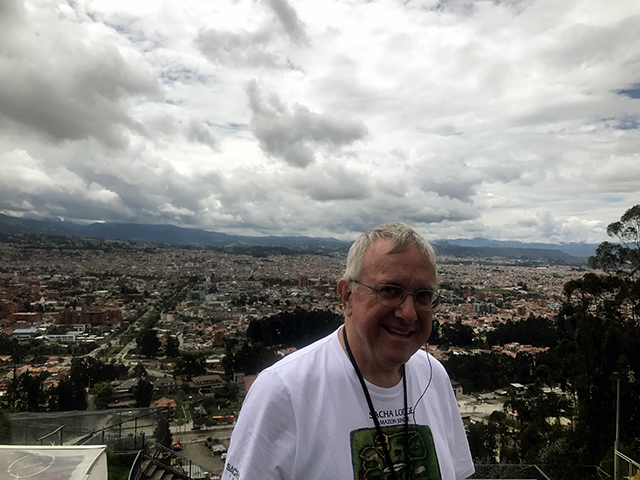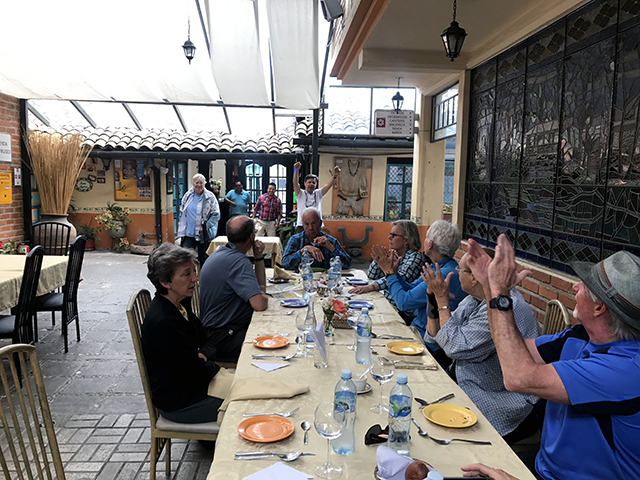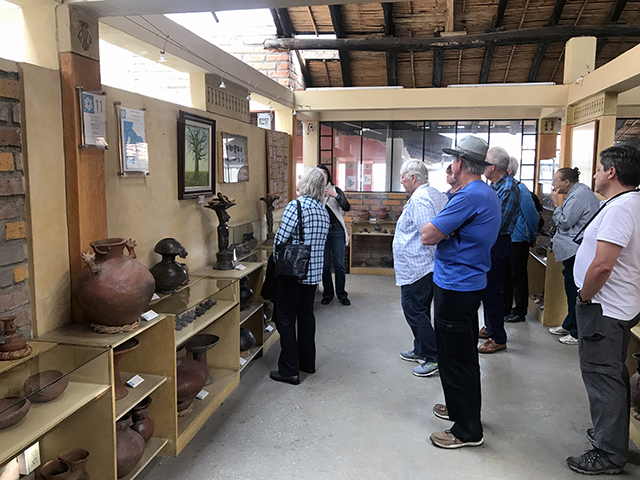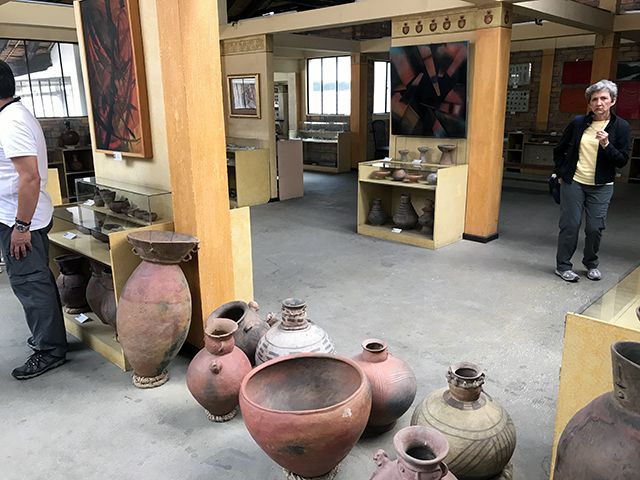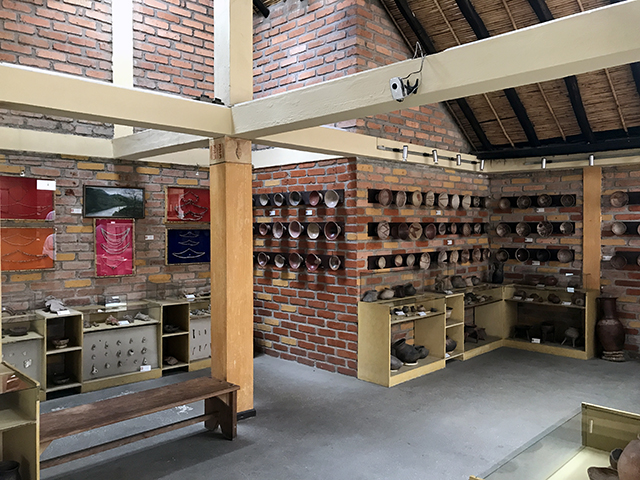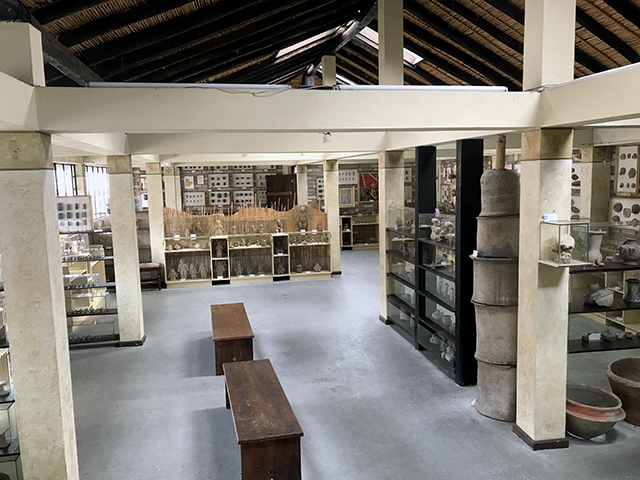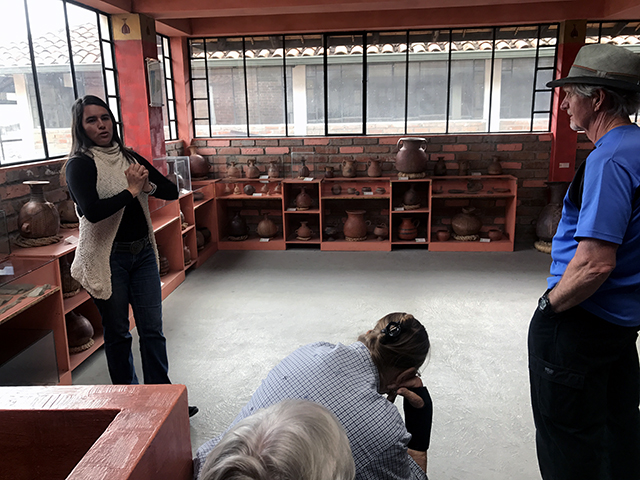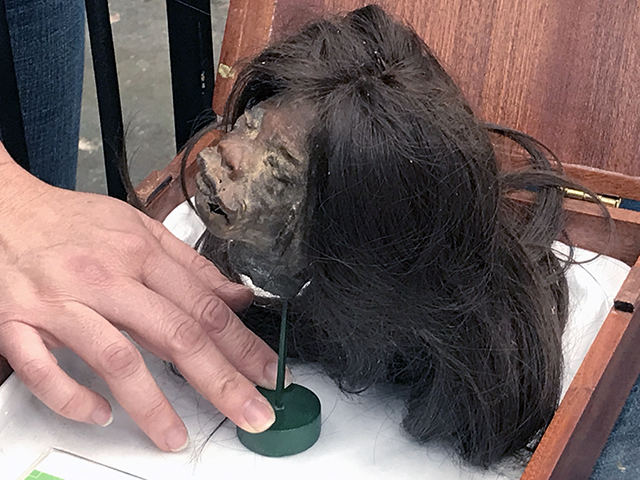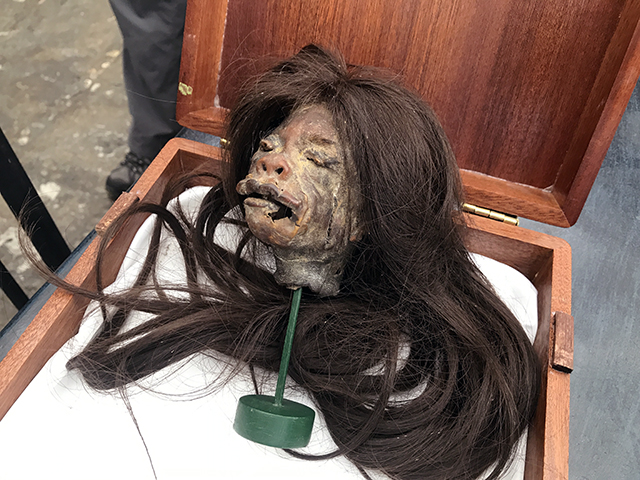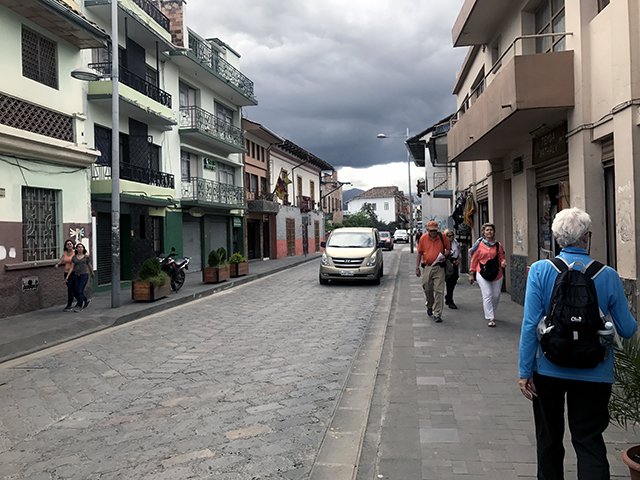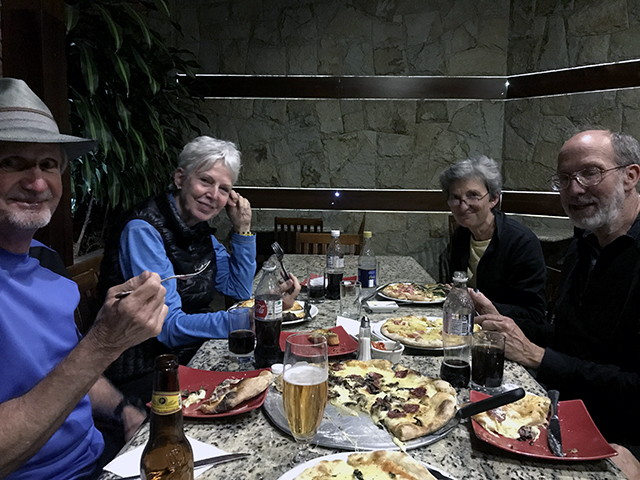|
Hotel Santa Lucia is a very nice boutique hotel.
The central atrium showcases a very nice restaurant where we never ate.
See that door up there at the top center of the pic just behind the bright leaves to the right? That's Bill's room. It seemed to be a popular place for people to chat and children to play up until about 10:00 pm when, to Bill's relief, things got perfectly quiet and stayed that way all night.
Here's where the Road Scholars had breakfast in the mornings.
If you're ever in Cuenca, don't order the pork for breakfast. It'll be tough. But that cornmeal stuff. desayuno moriaco, will be delicious. Eduardo was a little embarrassed after he recommended I order this traditional breakfast, as he realized I'd be getting the same thing for lunch. Actually the lunch version turned out to be better.
So let's go explore Cuenca. That's the hotel, and just down the street is the cathedral.
And over there is a government building.
And over there is the cathedral again.
And here we are in the park where Larry and CJ and I saw the break dancers last night.
Eduardo says that's a government building. Two sides of the park have government buildings, and the other two sides have churches. All the power, equally shared, right there surrounding the park.
Eduardo says that monument honors a 19-year-old who died a hero in service to Ecuador.
And that guy will let your kid sit on the wooden horse and he'll take a picture in B&W because that's traditionally what you do in this park.
And that's the Church of the Immaculate Conception. Cuenca’s piece de resistance, the massive Cathedral of the Immaculate Conception, or New Cathedral, is worth a trip in itself. With Spanish stained-glass windows, Italian marble on the walls and floors and its three unmistakable blue domes, this cathedral is an astounding work of art. Construction began in 1885 and continued over the next one hundred years to create this feat of architecture. Although easy to find due to its size, the church is also located on Cuenca’s main park, Parque Calderon and is still in use today.
Here we are inside.
I guess I've seen so many cathedrals over the years that even when I'm looking at something as admittedly magnificent as this, my impressometer hardly manages to register. Nice, though, right? Yep, it is.
And it honors indigenous people in a stained glass window. But Mass is about to begin so tourists have to leave.
Look at this! The Spanish appropriated stones from Incan temples to build their churches.
That's the Church of El Carmen de Asunción with the popular flower market outside.
Bill is enjoying himself so much he's started taking selfies.
The convent nuns have been sealed inside by the Pope.
But they do contact the outside world to make money selling wine through this lazy susan thing.
When you want to buy wine from the nuns, you come to the convent and pull that chain.
Here's how it works. And not a nun in sight.
Outside, that arrangement of roses costs $10.
This one costs $7.00.
Lotsa pretty flowers in the market.
That's an interesting building.
And over there is the Church of the Immaculate Conception that we visited earlier. The three domes are pretty impressive.
Need a pot? Here's a shop for you.
How about some tree tomatoes? We're about to visit a very impressive market.
How about some fresh chicken?
Or some other meat? Any meat you want.
How about some lard? We got lard.
We got it all.
Even tripe.
The whole cow? No problem.
How about fruits and veggies?
We got 'em here.
Even weird looking lychee from Asia.
Look down there! It's the Rio Tomebamba.
Beautiful stream rushing through the city of Cuenca.
Right by the University.
While we're resting by the stream, Eduardo had bought us a treat. This banana is called Orito. Want to know the truth. It wasn't very good. More bitter than sweet. But thanks anyway, Eduardo. I did appreciate the opportunity to try one.
Everybody is pretending to like them.
There's a nice new apartment building by the river.
And, oh look! Eduardo had told us that years back people used to come to the river in Cuenca to do their laundry, but you don't see that much anymore. But today...
It's wash day!
Here's how it works.
Looks like today a whole bunch of young people have come downtown to dance traditional dances in a park nearby. Not only that, they're going to do their own washing in the river, just like the real people doing real wash. This is getting weird.
Everybody's coming down to the river.
Eduardo tries to explain what's going on.
The police are preparing themselves for ... I dunno ... whatever.
And look down there on the left. It's kids preparing to do phony wash just like the real family doing real wash just a bit upstream.
It may be phony, but it's colorful.
Eduardo says the riverbanks used to be covered with colorful clothes like this.
Now we've taken the bus to a real Panama Hat company -- Homero Ortega, known the world over.
But aren't Panama hats from Panama? Nope, according to Eduardo, who knows everything there is to know. See, way back around 1849 when the '49ers were gold rushing west many of them took boats to Panama, where, in the absence of a canal at the time, they made their way however they could across the isthmus anyway and took another boat from the west coast of Panama to California. And while they were fighting the tropical sun in Panama, they needed hats, didn't they? Well it just so happened that Ecuador was exporting some snazzy headgear all over South and Central America about that time, so lots of prospective prospectors showed up in California sporting "Panama Hats" that actually were from Ecuador. And Ecuador has been putting up with the confusion ever since.
Here's a nice young lady showing us how the hand-woven hats are hand-woven.
CJ is impressed.
But after the hand-weaving, there's still work to be done.
This guy is showing us how the finished product used to be made. He's keeping his head low because he doesn't want us to realize he's a mannequin.
But these days the finishing is done by machine.
Some hats get dyed in vats.
So you have different colors.
And then you press them into shape.
There are lots of shapes to choose from.
And then there are final touches added by hand.
And voila! Finished products.
Lowell, you look mahvelous.
Bill, not so much.
But when you put 'em all together, the Road Scholars have never looked finer.
Now let's go up high on a hill in Cuenca -- the Mirador de Turi (Google is a wonderful thing.) Look, there's been a wedding. See the pretty little girl over there? Well across the parking lot behind her there's an overlook.
And using my iPhone's panorama trick shot capability, now you can see the whole city spread out before you.
Cuenca is a very big city, the most European in Ecuador.
And you'd never heard of it.
Well neither had Bill. But he'll never forget it now because it seems a terrific place to live. In fact, while he was sitting with Lowell right about here they got into a conversation with a man from Virginia who was seriously considering retirement here.
Now we're off to lunch and a guided tour at the Museo de las Culturas Aborigines. Marilyn hadn't been feeling well this morning, so the plan was for her to take a taxi to the Museum and meet us for lunch. But there was a mix-up with directions and Eduardo saw her approaching in her taxi and then he saw her speeding away in her taxi even though he was running down the street after her and for awhile, Marilyn was touring some other museum, wondering where we were. But Eduardo, bless him, got it all straightened out and here's Marilyn, finally, joining us for lunch, to great cheers from the Road Scholars.
Some of the museum's Incan artifacts were pretty impressive works of art. How about this clay bowl that's shaped like a bat with his wings spread? I think it has sort of an art nouveau look.
The Road Scholars take in the exhibit.
Lots and lots of pots.
Nicely arranged.
Comprehensive.
And our tour guide was not only the owner's daughter, but an expert in Incan artifacts in her own right.
She even brought out a special, seldom-exhibited piece just for us.
Oh boy! An honest-to-goodness Amazonian Indian shrunken head.
She said it was probably collected from some poor tribal enemy's neck some time in the mid-1800s. Yes, it's real. Yes, that's the poor guy's real hair. Quite a trophy, don't you think?
After that, we walked back to the hotel.
And for dinner? Shall we have traditional Ecuadorian fare? Again, after eating it for two straight weeks? Are you kidding. Tonight we're having PIZZA!
|

